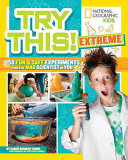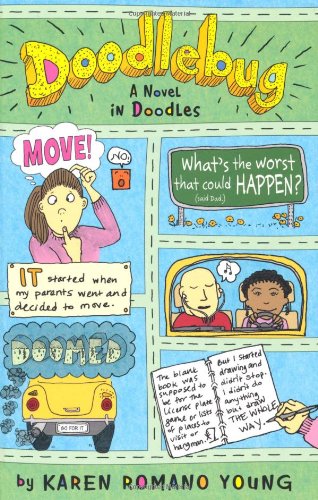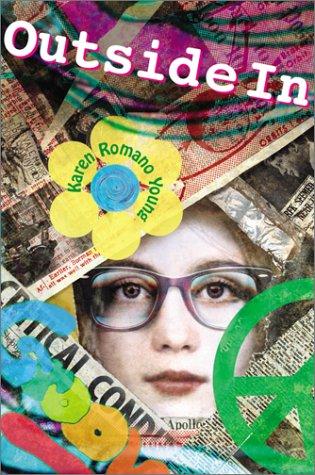Young, Karen Romano
20 Reviews
(2)
4-6
Illustrated by
Jessixa Bagley.
Pearl was born at the Lancaster Avenue branch of the (fictional) New York City Library, and as the circulation librarian's daughter, she has felt at home there for more than a decade. But the library building is neglected and in disrepair, and developers want to repurpose it for housing. When Pearl discovers the library's beloved statue of Edna St. Vincent Millay is missing its head, she leads a search for it while organizing neighborhood enthusiasm for both "Vincent" and the library. In a surprise fantastical twist, she discovers that the raccoons living in the library's basement are book lovers, skilled journalists, and some of her most valuable allies in the fight to save her home. The richly developed cast of characters--library manager Bruce, Pearl's classmate Francine, journalist Jonathan Yoiks--supports a solid and fast-moving plot with an entertaining narrative reveal. Bagley's illustrations bring Pearl's world to life, and the explanatory sidebars that appear throughout the book ("A Sidebar About Exclamation Points"; "A Sidebar About Homelessness") are informative as well as plot-shaping. Pearl's growth over the course of the story is satisfying, and the book effectively delivers its multiple messages without overwhelming readers.
Reviewer: Sarah Rettger
| Horn Book Magazine Issue:
January, 2020
(3)
YA
Sharks are more than ocean-dwelling dangers, argues Young in this fact- and photo-filled introduction. Textbook-like chapters provide discussion of shark anatomy, migration, reproduction, feeding habits, and cultural misconceptions while also delving into the scientific work involved in studying and protecting sharks, giving budding ichthyologists a glimpse of possible career directions. Includes a guide to the eight orders of shark species. Reading list, websites. Bib., glos., ind.
Reviewer: Erica Wetter
(4)
4-6
Photographs by
Matthew Rakola.
Common do-at-home science experiments center on "extreme" temperatures, environments, abilities, and more. Each activity's crowded spread includes a difficulty rating, time involved, concepts covered, a materials list, instructions, extension activities, and photos showing a diverse group of kid scientists performing the experiment. The cluttered layout and tiny type are downsides, but the clearly explained experiments invite critical thinking; safety is emphasized throughout. Ind.
Reviewer: Janet Dawson
(4)
YA
Young overloads her presentation with myriad topics regarding whales and their relationships with humans. Basic science is followed by whaling and its eventual ban, profiles of scientists engaged in research, the controversies surrounding captivity, and citizen science projects devoted to conservation. Photographs, diagrams, sidebars, and quotes are included. A basic "Whale Guide" on twenty different species is appended. Reading list, websites. Bib., glos., ind.
Reviewer: Danielle J. Ford
(4)
4-6
Based on a True Story series.
Illustrated by
Clint Hansen.
These historical fiction stories introduce middle-grade readers to the experiences of real children. Written under one pseudonym by different authors, the novels, accompanied by black-and-white drawings and archival images and photos, are accessible if not riveting entrées into their subjects' lives. (Jemison's use of savage, true to the times, would have benefited from some contextualizing.) Each entry includes an author's note separating fact from fiction. Clem and Jemison contain glossaries. Review covers these Based on a True Story titles: John Lincoln Clem, Mary Jemison, Nettie & Nellie Crook, and Sybil Ludington.
Reviewer: Cyrisse Jaffee
(3)
YA
The remnants of space exploration--thousands of defunct satellites, rocket parts, and debris from collisions of this material--pose threats to humans on Earth and challenges for current (and possibly future) space engineers and politicians. Young's careful consideration of the issue is accompanied by photographs, artistic renderings, and diagrams that show what all that junk is and where it's lurking. Reading list, timeline, websites. Bib., glos., ind.
Reviewer: Danielle J. Ford
(2)
4-6
Sixth grader Christine ("Tink," short for Tinker Bell) is physically maturing faster than best friend Jackie, but Jackie feels much readier to be a teenager; that tension is evident in their frequent phone conversations, presented in script format. In an often funny, mostly episodic novel about one grade and particularly one friendship, Young is honest about the ins and outs of sixth-grade dynamics.
Reviewer: Shoshana Flax
| Horn Book Magazine Issue:
November, 2016
(4)
4-6
National Geographic Kids Mission series.
With Daniel Raven-Ellison. Spectacular photos, fascinating facts, anecdotes about individual turtles, and updates from field scientists give a thorough overview of the species' survival threats and current status. Unfortunately, the design is busy and page inserts of stories and interviews interrupt the flow of the narrative. Each chapter ends with "rescue activities," such as holding an awareness-raising art show and writing to politicians. Reading list, websites. Ind.
Reviewer: Grace Worcester Greene
(4)
4-6
Common do-at-home science experiments (arranged into arbitrary categories such as "people and other animals," "machines," and "reactions") are presented overeagerly, but they successfully demonstrate basic scientific principles. Energetic layouts of the step-by-step directions; color photographs of the setups and kids engaging in the activities; and helpful information such as estimates of time and troubleshooting crowd the pages. Ind.
Reviewer: Danielle J. Ford
(3)
4-6
Her whole family is settling in after a move to San Francisco, and Doreen (Doodlebug) doodles to help her cope with ADD and the challenges of a new middle school. Most young readers will relate to her struggle to fit in. The handwritten journal is filled with imaginative, childlike illustrations; both the format and subject matter will have wide appeal.
Reviewer: April Mazza
(3)
4-6
Doreen's family moves from LA to San Francisco after she gets caught selling her Ritalin to classmates ($.25 a pop). She chronicles her transition to a new school and attempts to control herself through art instead of medication in this doodle-filled volume. Doreen's vivid first-person narration and humorous sketches combine for an entertaining look at one seventh-grader's life.
Reviewer: Beth L. Meister
(3)
4-6
Science Fair Winners series.
Illustrated by
David Goldin.
These volumes provide outlines for science fair projects in the behavioral (Family) and environmental (Junkyard) sciences. The procedures include just enough structure to help novice experimenters get started. There are no answers provided; instead, well-placed questions encourage creativity and further thinking. Each volume includes humorous cartoon spot illustrations and a section on preparing presentations. Reading list, websites. Ind. Review covers these Science Fair Winners titles: Experiments to Do on Your Family and Junkyard Science.
Reviewer: Danielle J. Ford
(3)
4-6
Science Fair Winners series.
Illustrated by
David Goldin.
These volumes provide outlines for science fair projects in the behavioral (Family) and environmental (Junkyard) sciences. The procedures include just enough structure to help novice experimenters get started. There are no answers provided; instead, well-placed questions encourage creativity and further thinking. Each volume includes humorous cartoon spot illustrations and a section on preparing presentations. Reading list, websites. Ind. Review covers these Science Fair Winners titles: Experiments to Do on Your Family and Junkyard Science.
Reviewer: Danielle J. Ford
(4)
4-6
Science Fair Winners series.
Illustrated by
David Goldin.
Each of these books presents twenty "workshops" along with general guidelines about the amount of time, various materials, scientific concepts and terminology, and safety issues required to complete a science-fair-worthy project. Readers need a good grasp of experimental design (or a helpful adult) to move from idea to completed project. Cartoon illustrations accompany the texts. Crime includes a reading list. Websites. Ind. Review covers these Science Fair Winners titles: Bug Science and Crime Scene Science.
Reviewer: Danielle J. Ford
(4)
4-6
Science Fair Winners series.
Illustrated by
David Goldin.
Each of these books presents twenty "workshops" along with general guidelines about the amount of time, various materials, scientific concepts and terminology, and safety issues required to complete a science-fair-worthy project. Readers need a good grasp of experimental design (or a helpful adult) to move from idea to completed project. Cartoon illustrations accompany the texts. Crime includes a reading list. Websites. Ind. Review covers these Science Fair Winners titles: Bug Science and Crime Scene Science.
Reviewer: Danielle J. Ford
(3)
YA
Along with a rich cultural and ethnic mix, Nancy's unusual heritage includes the ancestral line of Anansi. As she waits impatiently for her own spider gifts to be revealed, she is powerfully drawn to a strange, pale boy whose family's fate is inextricably tangled with hers. Spider lore adds an original twist to this quiet coming-of-age story, set in contemporary Brooklyn.
Reviewer: Lauren Adams
(4)
4-6
In 1968, almost-thirteen-year-old Chérie faces a lot of changes. Her mother is pregnant, the boy next door might be more than a friend, and a local girl's kidnapping is deeply unsettling. In addition, headlines from the newspapers Chérie delivers bring the turbulent times close to home. This tale of maturation features likable characters, but the focus on national events tends to overwhelm the story.
Reviewer: Lauren Rizzuto
(3)
4-6
This conversational book is an expansive introduction to maps: what they can represent (personal and universal), how they're made, their historical development, their cultural distinctions, and more. Varied illustrations extend the text, as do numerous sidebars on contemporary mapmakers and on related topics such as submarines that map the ocean floor. Bib., ind.
Reviewer: Frieda F. Bostian
(3)
YA
Whether the "love story" of the title is between red-haired mechanic Daisy and fellow mechanic Billy Thatcher or between Daisy and the purple VW Beetle she is restoring is never clear, to Billy's frustration. While offering plenty of role models for mechanically minded young girls, the story sometimes mires in Daisy's self-absorption but still delivers a loving family and touching romance.
Reviewer: Anita L. Burkam
(4)
4-6
Turnstone Ocean Pilot Book series.
This overbroad volume describes the physical characteristics of the Arctic, discusses the work of late-1800s' oceanographer Fridtjof Nansen, and touches on some of the work contemporary scientists are doing as they investigate the ecosystem. The unfocused text ends up being somewhat superficial in its coverage. The accompanying color photographs are mediocre in quality. Bib., glos., ind.
Reviewer: Peter D. Sieruta
20 reviews
We are currently offering this content for free. Sign up now to activate your personal profile, where you can save articles for future viewing.























